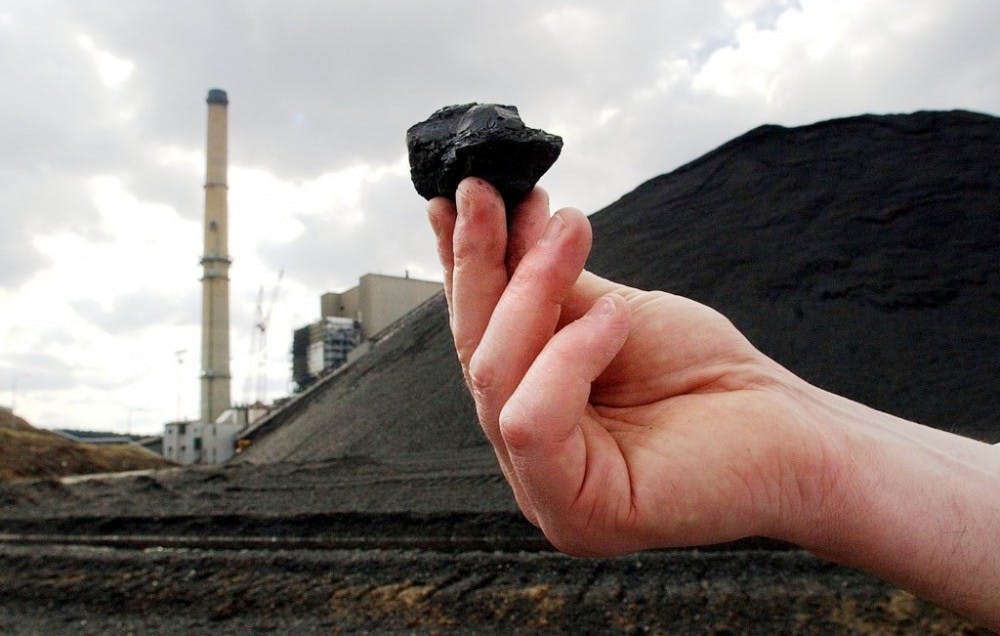As more leaks are discovered in North Carolina’s Dan River, environmental groups are saying the effects of the tens of thousands of tons of coal ash could remain in the ecosystem for at least a decade.
Feb. 2, a pipe containing coal ash produced by Duke Energy burst, releasing the coal byproduct containing metals like arsenic, lead and mercury into the Dan River. Duke Energy initially said around 82,000 tons of coal ash were released, but changed that number to between 30,000 and 39,000 tons.
Kara Dodson, field organizer with the area environmental group Appalachian Voices, said the pollution from the spill mixes with the river’s sediment and remains for a long time.
“Most studies have shown the environmental impacts from coal ash leaks last for 10 years or more,” Dodson said. “The science isn’t out on that yet, but it could be decades before we stop seeing effects from this spill.”
The health effects are then multiplied over time by the wildlife in the river.
“The insects ingest these heavy metals, fish eat these insects and it moves up the food chain. In a few months or years we will see an accumulation of arsenic, lead and mercury in these animals,” Dodson said.
Arsenic, lead and mercury are all cumulative toxins, which are absorbed more quickly than the body can expel them. This leads to the toxins remaining in the body longer. Even if the amount of the toxin in the environment is not very high, it can do more significant damage in the body because of its longevity.
The Dan River is the source of drinking water for towns like Danville, Va., where City Manager Joe King said the water is safe to drink.
“When the ash spill occurred Sunday, Feb. 2, we found we were able to treat the water very safely using all our current technologies. The water we deliver is clear and meets all state drinking standards,” King said in a statement Feb. 13.
As far as recreational use of the river goes, King said the city is basing its advisories on regulatory agencies, primarily the Virginia Department of Health and Department of Environmental Quality.
“They’re assuring us that the river conditions are as they were before this coal ash incident,” King said. “Before this incident, there was an advisory from the state not to consume certain kinds of fish and that is still in effect but it is not affected by the coal ash spill.”
King said he’s glad that Duke Energy is taking responsibility for the spill but said that, as one of the affected cities, Danville will work to hold the company accountable. He said that process starts by assessing the damage to the Dan River.
“We just have no idea what the damage is and now it’s a little early to even guess at that because we don’t really know how much coal ash made it into the water or how much made it down this far,” King said.
The U.S. Environmental Protection Agency also said it tested treated water from plants in towns like Danville and said they have not “shown any detections above Federal Maximum Contaminant Levels.”
Since the Feb. 2 spill, the N.C. Department of Environment and Natural Resources (DENR) has reported that another piping system put in place to divert the coal ash has burst in the Dan River, releasing 1,000 tons of wastewater.
In addition, the DENR reported Feb. 14 that a second pipe containing coal ash in the area is leaking as well, although it has not yet burst. The N.C. Division of Energy, Mineral and Land Resources has given Duke Energy 10 days to come up with a plan to prevent another burst.
Duke Energy spokesperson Lisa Hoffmann said this is a unique spill because a stormwater pipe spilled the coal ash from the basin.
“We are working to identify and locate other stormwater pipes that may interfere with our storage facilities,” Hoffmann said.
Dodson said the risk of coal ash spills like this come from storing the material in wet disposal areas or “impoundments,” where it has a much higher chance of affecting surrounding ecosystems in the event of a spill or leak.
“Duke needs to remove all of their wet impoundments. They need to de-water the ponds, excavate the ash and sediment and put that material into lined landfills away from drinking water resources,” Dodson said.
While lining dry landfills prevents the coal ash from seeping into groundwater, there is also the risk of wind blowing the coal ash into the air and creating a breathing hazard.
A 2009 report by the EPA on the Dan River Steam Station found that the basins used to store coal ash were “significant hazard potential structures,” which the report defines as structures that would cause economic and environmental damage, but not loss of life, if they fail.
In addition to concerns over the current spills, the DENR also filed a lawsuit against Duke Energy on Aug. 16, 2013, for seepage from coal ash ponds to the Dan River.
The U.S. Attorney’s Office for the Eastern District of North Carolina subpoenaed Duke Energy and the DENR to testify before a federal grand jury March 18.


